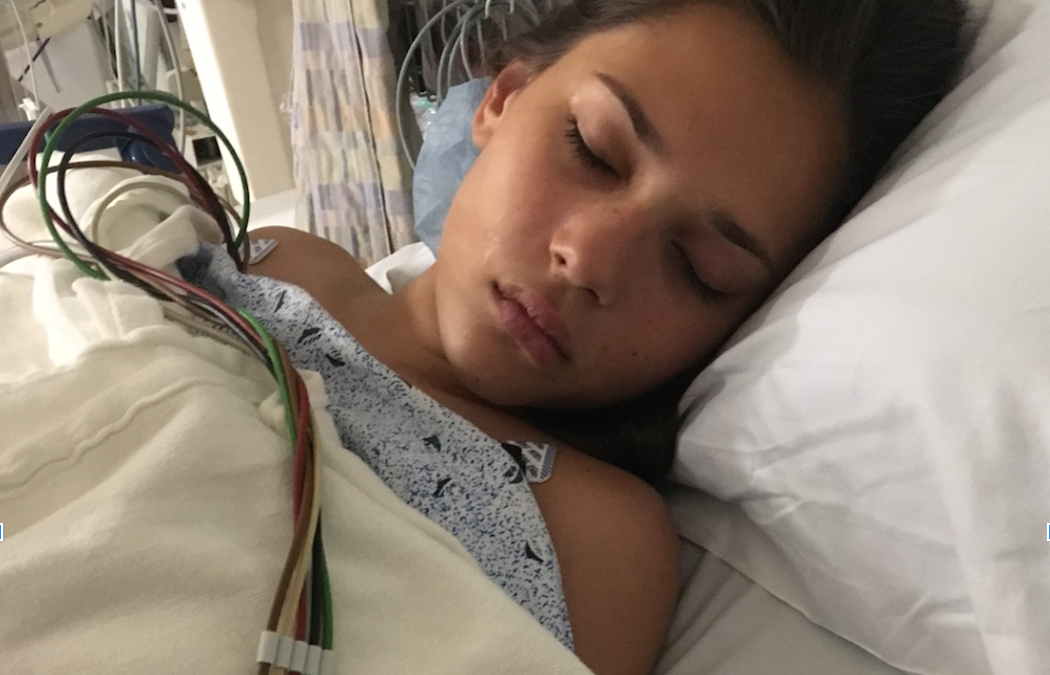
Nov 17, 2018 | Featured, Summer Experiences
By Lauren Drzala ’21
July 23, 2018 will be a day I will always remember. After finishing my lunch for the day, I began to feel sharp pains in my stomach and immediately thought – “this is very unusual for me.” Hours passed and the pain just kept getting worse. I was becoming desperate and anxiety crept in, so naturally, I turned to Google for some reliable advice on a homemade remedy. Long story short, the apple cider vinegar nor the lemon juice with ginger did my stomach any justice. I decided to call a friend, willing to try anything. She said that her mom usually gave her warm milk with turmeric. Immediately, I was a bit hesitant because I had no idea what turmeric would taste like. Looking back on it, I should have listened to my first instinct while I was chugging down a glass of that concoction. When I thought all hope was lost, I swallowed my pride and went to the people that I should have gone to in the very beginning: my parents. My dad gave me two Motrin and told me to wait. Nothing happened. My mom didn’t even believe that there was anything wrong with me, thinking I made the pain up. As I was counting down the hours to the never-ending day, my sister Emma approached my room, thinking she could give me some insight. “Hey Lauren, where is the pain, because it might be appendicitis.” I angrily responded, “Go away, Emma. It’s not appendicitis. It isn’t that bad.” Something actually being wrong with me was the last thing on my mind. In the end, I decided the best thing to do was to go to sleep and wait for the pain to subside.
At 2 a.m., I woke up to what felt like someone stabbing me in the stomach. Immediately, I went to my parents, knowing that there something was terribly wrong. My dad, as any physician would do, asked me to describe the pain and its location. I pointed to my lower left abdomen. My mom suggested appendicitis, remarking that she had had it around my age. Once she said this, I was reminded of Emma’s earlier comment. I could just hear her saying that she was right over and over again in my head. We soon rushed to the hospital and waited until I was admitted to a room. The pain was in full force, as if there was a war going on in my stomach. Finally, the drugs that the nurse gave me kicked in. I was starting to feel a little better, and thought that this was all a mistake and that there was nothing wrong with me. After many hours of testing, nothing showed up – that is, until they tried a CAT scan.
Once the scan was complete, the nurse came back and said that it was, in fact, appendicitis. Sighing in dismay, I decided to accept my fate and prepared for the surgery. I was not on the list of surgeries that day so I did not know when I could get this little monster out of me. So, I decided to get comfortable and watch TV for the remainder of the time. I mainly enjoyed HGTV, talking to my mom about how the couples chose the wrong house. I do not think that she was as invested as I was, after seeing the concern on her face. Finally, the doctors came in and wheeled me into the operating room.
The doctors began to give me anesthesia. In about 10 seconds, I was out like a light. I woke up being wheeled back to my room and being set on my bed. “It’s over,” I thought. Wrong. The remainder of the night consisted of doctors coming in and out of my room every single hour, checking my heart beat and asking me how I was feeling. I can certainly say that that was the worst sleep I have ever had. The following morning the doctors finally said I could go home and told me that I couldn’t do any physical activity for a while. The next few weeks consisted of me lounging around, hunching down on my stomach so it wouldn’t hurt, and watching movie after movie, including the whole Harry Potter series. I think that we can all agree that Dolores Umbridge, the “Lady in Pink,” was a far worse threat to Harry Potter than Voldemort. Fast forward to August, and I was finally starting to feel like myself again. I wish that I could say that, at the end, I learned more about myself or that I am a changed person, but I am not. I am still the same Lauren, just minus an appendix.
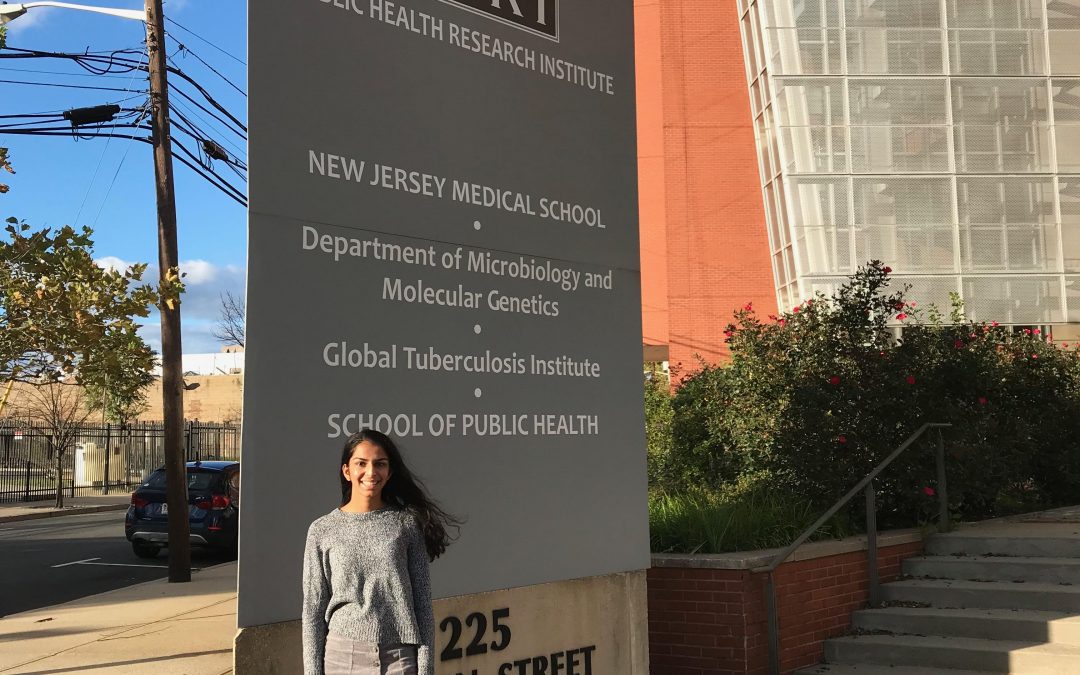
Nov 13, 2018 | Featured, Summer Experiences
By Anjali Kapoor ’20
I’ve always wanted to follow in my uncle’s footsteps and become a doctor. My uncle is an orthopedic surgeon with his own hospital in India and I was always mesmerized by the dozens of patients and doctors swarming the halls. While I knew that I liked and excelled in biology, and it’s always been my childhood dream to study medicine, I didn’t exactly know what being a doctor entailed. This summer, I set out to learn more about the field – I was going to conduct hands-on research and shadow doctors.
For the first half of the summer, I worked in Dr. Pandey’s lab at Rutgers University researching Hepatitis C. Hepatitis C is a viral infection that causes liver inflammation and is spread through contaminated blood. It is the leading cause for hepatocellular carcinoma, a common form of liver cancer. While vaccines exist for the related diseases Hepatitis A and B, there is no existing vaccine for Hepatitis C. In particular, Dr. Pandey’s lab was looking at the Fuse Binding Protein 1 (FBP1) and its interaction with the p53 tumor suppressor gene, an important gene that regulates the cell cycle. In previous research, Dr. Pandey found that the FBP1 inhibits the p53 gene by binding to some part of its DNA sequence and, when p53 is inhibited, the likelihood that a cancerous tumor forms increases. Based on that research, we were trying to determine the exact portion of the DNA sequence of the p53 gene that FBP1 binds to. Dr. Pandey’s plan to solve this consisted of cutting the DNA sequence into many different pieces and testing each piece to see if it would bind to FBP1, slowly narrowing the DNA sequence to find the exact base pairs that were binding to FBP1. My role in this project was preparing and testing one of these pieces of DNA to see if it would bind to FBP1. This involved cell cultures, transformations, restriction digests, and the polymerase chain reaction (PCR) technique. While I was not able to see the project through to completion, his doctoral candidates will continue the project and Dr. Pandey hopes to publish a paper on this research by November.
For the second half of the summer, I shadowed three different types of doctors: a general/vascular surgeon, a dermatologist, and a plastic surgeon. It was really interesting to learn about the three different careers, and from the doctor’s perspective rather than the patient’s. When I shadowed the general/vascular surgeon, I saw generally older patients with varicose veins, hernias, and gallstones. I learned about vein stripping procedures, angioplasties, and colonoscopies – it’s amazing how so many of these procedures can be done robotically! Next, I shadowed a dermatologist for a few days and saw people of all ages with dozens of skin issues ranging from common acne to severe skin cancers. I also was able to watch multiple skin cancer surgeries (I definitely learned the importance of sunscreen!) and got to cut my first stitch. He also showed me cosmetic procedures such as how to inject botox and fillers, along with how a new machine trims fat. Lastly, I shadowed a plastic surgeon who focuses on hand reconstructions. I saw many people who had sliced their hand or gotten it stuck in a door and required surgery. All three doctors were very encouraging and gave me advice on how to choose a field and pursue medicine.
Overall, both research and shadowing were great experiences that helped me gain exposure into the world of biology and medicine. It was especially interesting as I got to see both sides of medicine: the scientists doing the early cell research and the doctors treating the diseases based on what the scientists find. While it’s clear becoming a doctor will take many years of studying, learning more about the field and their day-to-day lives has only strengthened my resolve to someday join their profession!
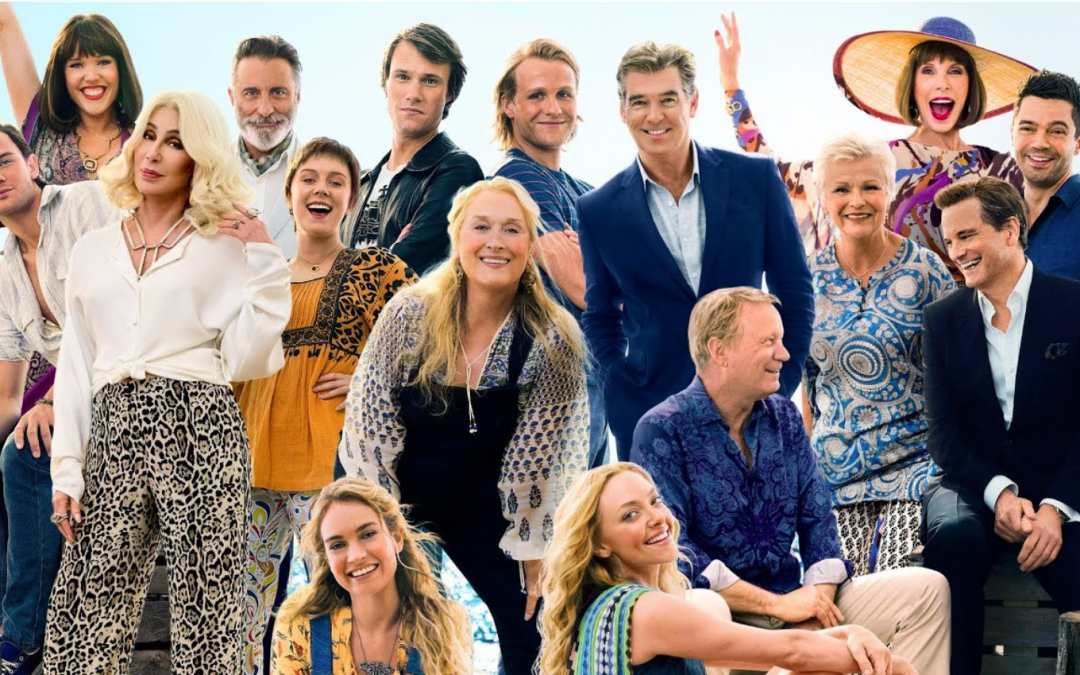
Nov 13, 2018 | Columns, Movies, Summer Experiences
By Martha Lewand ’20
Ever since the movie Mamma Mia was released, fans (including myself) have been anxiously waiting for a sequel. Ten highly-anticipated years later, Mamma Mia 2: Here We Go Again! is finally here! Directed by Ol Parker, the film had my friends and I singing joyously and dancing out of our seats in the movie theater.
The movie includes two concurring storylines, one of young Donna Sheridan (played by Lily James) and the other of her daughter Sophie Sheridan (Amanda Seyfreid) in current times. Circa late 1970s, young Donna has just graduated from university and is eager for adventure. The story details how she meets young Bill (Josh Dylan), Harry (Hugh Skinner), and Sam (Jeremy Irvine) trekking through Europe and ultimately makes her way to the Greek island of Kalokairi. In present day, Sophie grapples with her mother’s (Meryl Streep) recent death, the responsibility of reopening the hotel her mother started, relationship troubles with her husband Sky (Dominic Cooper), and an impending storm potentially preventing her two fathers, Harry (Colin Firth) and Bill (Stellan Skarsgard), from attending the reopening.
No doubt, the best part of the film is the musical numbers. Covers of songs from the first movie are beautifully sung with their own twists while still respecting the original versions. Classics such as “Dancing Queen,” “Mamma Mia,” and, most notably, “Waterloo” all come to life again under the new direction. In the first version, the ABBA tune “Waterloo” was played during the closing credits as the cast danced and sang along. In the sequel, the song is revised in a scene that takes place in a local Parisian cafe with young Donna and Harry. The song is performed in an elaborate fashion, with berets, baguettes, cartwheeling waiters, and French Revolution-esque costumes stealing the show. The corniness of the new “Waterloo” adds an amusing, engaging charm the older version did not possess.
While acknowledging the musical foundation of the first film, Mamma Mia 2 is able to create new songs that fit seamlessly in the plot and are remarkably catchy. When young Donna graduates from college, she performs “When I Kissed the Teacher,” a song that represents the provocative, audacious, and spunky side of Donna’s character to which we are just being introduced. Lily James superbly embodies young Donna’s free spirit throughout her quality vocal performances.
To offer a point of criticism, although I respect Ol Parker’s decision to take on the massive plot, the constant back and forth between time periods is confusing to follow at times. With that being said, however, what I admire most about Mamma Mia 2 is its goal to not attempt to recreate the plot and success of the first movie. For example, most people disagree with the inclusion of Meryl Streep-as-Donna’s death and argue that the exclusion of the actress hurts the movie. But after viewing the film, I conclude that it was a shrewd decision. Even though it was risky to remove an icon like Meryl Streep, the entire movie pays homage to her; the retelling and glorification of Donna’s life story is the most prominent and sentimental element of the whole movie.
The amazing collaboration of the new and old casts, catchy music, and a complex plot with twists and turns throughout make Mamma Mia 2 a hit. If you are ever in the mood to dance and sing along to some classic, uplifting tunes, I strongly recommend seeing Mamma Mia 2 as soon as possible.
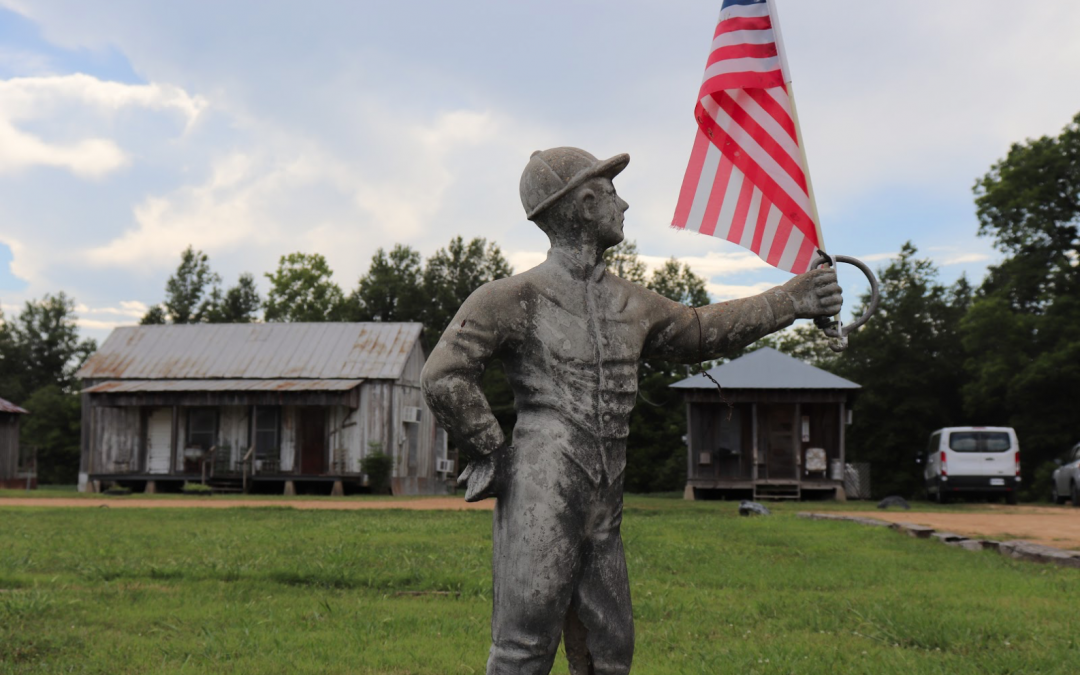
Nov 12, 2018 | Featured, Summer Experiences
By Allie Matthias ’19
On the Fourth of July, I paddled up the Mississippi River as part of a New York Times Student Journey. The late afternoon sun-baked the canoe as sweat dripped down my back. My heart pounded, my eyes stung from melted sunscreen, and my arms began to feel like jelly as we pushed against the current. Isaac, the curly-haired leader of our canoe, sat in front of me while the rest of our group, a diverse mix of boys and girls from all across the country, sat behind me with their paddles ready. Isaac began paddling and the rest of us followed, trying to coordinate with his movements. Everyone grew tired as we reached the Arkansas border and some took a rest. Thinking, “this is good practice for the upcoming tennis season,” I kept pushing forward, but my arms grew heavier and heavier as more and more of my friends stopped paddling. I trusted myself to keep moving, but we needed everyone to propel us forward. On this journey, we examined social justice, specifically racial injustices, in the American South. We explored heavy issues that required us to be honest and vulnerable to broaden our understandings of each other. Canoeing was like having one of our conversations. We all had to work together to push forward into new ideas or new states of mind. Whitney, our group leader, suggested that we sing together to make the ride a little easier to endure. So, we joined together, paddling and singing Sweet Caroline in unison as we drifted towards a little island in the middle of the Mississippi. We trusted each other to give all our effort to paddling, and, in those moments, I was able to let myself go.
For me, this summer was the summer of exploring the United States and my role as a U.S. citizen. I witnessed both the beautiful and the ugly of this country by beginning and ending my summer in national parks and traveling through the South in between.
I began my summer with a family road trip through Appalachia, where I drove through the Blue Ridge Mountains, hiked Shenandoah National Park and the Smoky Mountains, and stayed at the majestic and eery Greenbrier resort in West Virginia. This was a part of the country that I’ve never been to before; the farthest south I had previously traveled in the U.S. was Florida (which barely counts as Southern). In West Virginia, I saw the embrace of Southern white tradition in the over-patterned and well-groomed Greenbrier, a monolith of golf courses and sweet tea. In Eastern Tennessee, I biked through a town ravaged with confederate flags and trucks. Yet, on the other side of all of this was the physical beauty of the Smoky Mountains that pulsed with both an intricate ecosystem of animals and enthusiastic environmentalists.
I ventured deeper into the South with the New York Times to dive into the racial injustices and the culture that was derived from it. From New Orleans to Clarksdale, Mississippi, I saw how there is great diversity and art pulsating throughout, from the blues music to theater groups. At the same time, in every city we ventured through, history was knocking. We visited the lynching memorial in Montgomery, walked across the Edmund Pettus Bridge in Selma, and toured a plantation that memorialized slave lives in Louisiana. There is so much to learn about the South, not just from physical buildings, but from people too, as they are the ones who lived through these stories.
I ended my survey of the U.S. in the Pacific Northwest, taking a ferry through the San Juan Islands and hiking in North Cascades and Olympic National Park. With my senior year closing in, I felt thankful for this breath of fresh air in an environment so distinct from New Jersey.
More than anything, my summer revealed the duality of this country, from the arts and culture to the racism and discrimination. In each state I traveled through, I considered how there has been so much progress, but there is still so much more to do. Most of all, I learned about myself as an American, what it means, and my identity in this country.
Nov 11, 2018 | Featured, Summer Experiences
By Caroline Santoro ’19
The first time I met my boss, he was accompanied by a swarm of Secret Service agents, and I was wearing a bright red bathing suit. Given my reputation as the “ethics girl,” people react pretty strongly when they hear that for the past two summers, I have worked as a lifeguard for President Trump at the Trump National Golf Club in Bedminster. Some people are fascinated by my brushes with celebrities, eager to know what Melania orders for lunch or whether I ever had to rescue Barron from the pool. Others are critical or supportive of my job based on their political views. With these reactions, whether shaming or praising me, I feel guilty because I am not trying to make a political statement through my employment. I feel obligated to make excuses, noting that it just happens to be the closest pool at which I could work or that I applied for the job in September before he was elected. From my many hours on the lifeguard stand, I have gotten a glimpse into the Trumps’ private lives and gained a much more complex understanding of them and myself.
On my first day of work, I was pushing an unwieldy bin of dirty towels when dozens of men in suits came rushing into the pool area, talking frantically into their earpieces. All of a sudden, in strolled the President in his golf whites, greeting me and asking how I was doing. I was freaking out. Here was the President of the United States, much taller and less orange than I anticipated. Seeing him there, removed from his place on the global stage, he seemed like nothing more than the owner of the club. Sure, there were security checkpoints and Secret Service agents everywhere, but greeting me, he was just a boss making sure that everything ran smoothly.
Ivanka Trump and Jared Kushner spend many days at their cottage on the property by the pool. If you didn’t recognize them, you wouldn’t think they are different from any other family. Ivanka is just a mom, chasing her kids around the pool in a bathing suit and coverup, and Jared is just a dad on a lounge chair, throwing his daughter rings to retrieve in the water. After a year full of news regarding Mr. Kushner’s role in the 2016 election, I have many misgivings about his political choices. However, I still appreciate that he greets me every morning, eagerly asks my opinion on the club sunscreen selection, and thanks all of the lifeguards at the end of each day.
The best part of my experience at Trump National Golf Club has undeniably been my interaction with the Secret Service. All I had known about these men and women was that in eleven seconds they could shoot down a plane in the no-fly zone around the golf course. Quite frankly, I thought of them as robots, trained to jump in front of bullets and defuse bombs. Every day I worked at Trump, I realized just how ignorant that perception was. I first talked to an agent while (again) taking the dirty towel bin to the laundry room. I was giving my best effort to lift the heavy bin over a door frame, with no luck. Seemingly out of nowhere, a muscular man in sunglasses appeared behind me and lifted the bin effortlessly, chuckling and commending my effort.
Since that day, Joel has become my favorite colleague. His face lights up when I walk into work, and he always has something encouraging to say, cheering me on for doing a great job because, as he puts it, “no one’s drowned yet.” He tells me about his family in Michigan, and I realize that not only are these people working one of the most difficult jobs in the world, but they are sacrificing so much to do it. I had complained about missing social events when I had to work late, but then I heard a phone call between an agent from San Francisco and his six-year-old son, who was sobbing because his dad missed his very first soccer game. Despite these tough circumstances, the agents are friendly, passionate, and funny, whether they are raving about the subs at Bedminster Pizza or fighting over college football rivalries. Their fun and mischievous nature make them my favorite part of work; I can’t forget how they pranked me by telling me that the bomb-sniffing dog found narcotics in my car.
Some people think that by working for Trump, I am supporting his policies and the way he treats people. After my summers as a lifeguard, I have learned that I can completely disagree with him but still appreciate the great aspects of my job – I’m getting paid to be in a beautiful place, keep people safe, and hang out with some pretty cool friends (who happen to be able to shoot down a plane in eleven seconds). I’ll still feel conflicted with every tweet and speech, but I know that instead of running away from my job, I can use it as an opportunity to learn to understand people with whom I don’t agree and see people not as caricatures but instead as the complex human beings they really are.
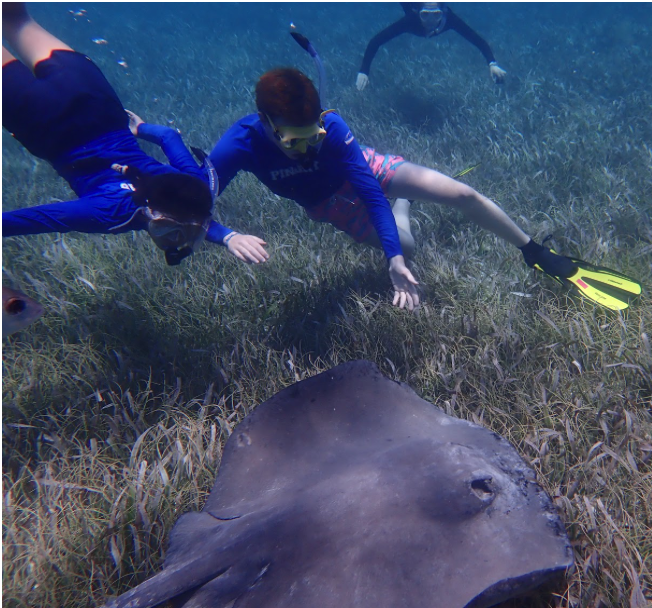
Nov 9, 2018 | Featured, Summer Experiences
By Grace Wang ’21
I took the trip of my life this summer nowhere other than Belize. Making some of my best friends and experiencing nature in an unmatchable environment, the trip changed my life and gave me an opportunity to experience life to the fullest.
I can still envision the sun’s rays peeking through the clearest water I have ever seen. I can still taste the sea on the tip of my tongue. I still feel the water flowing through my fingers. When my eyes are closed and I lay in bed at night I can still imagine myself on the Goliath rocking up and down. Everyone on that boat and I have an everlasting connection because, in our hearts, we’re still on the boat together. I can still sense everything so clearly, though putting these senses into words can’t capture the essence of the trip.
Being underwater, especially in a reef, is a surreal experience. The salt lifts you up and carries you through the water. Life below water and on land are two different universes. The dichotomy between them is what made each of them so special.
On land, we were in our universe. On land, everything is centralized around people. Everything about land has been tweaked and changed to conform to us.
Being underwater for hours at a time introduced me to so much more than just the ocean. When we were underwater, we were on a different planet. The ocean doesn’t change for us; we have to change for the ocean. Seeing all the different species of fish, coral, eel, shellfish, turtles, stingrays, manatees, and sharks, it was clear that for the first time in our lives, we weren’t the center of nature. The ocean is not for us, the ocean is for everything.
In the waters of Belize, it’s important to preserve the reef. We learned to appreciate and understand that humans can’t disturb an environment that isn’t ours. As a group, we worked with Belize TREC on a research project in order to discover whether preserving the waters of Belize truly benefits the species of underwater life. As we researched, we not only uncovered more about the reefs of Belize, we grew closer, developing into a tight-knit family.
Fellow trip-goer Carson Shilts (IV) said, “In Belize, not only was I able to experience a whole different culture, but I also made friends with people who I wouldn’t have met if I hadn’t gone to Belize. The people on the trip made it 10 times better and I cannot even explain how glad I am that I met them and went on that trip.”
Carolyn Coyne (IV) remarked that, “Belize was honestly the best trip I’ve ever been on. From our first time snorkeling and eating bean dip on the boat to playing UNO during our flight delay coming home, I was constantly having the time of my life. It’s hard to describe the trip in words—to really understand how amazing it was. I will be so sad if we don’t go back for ISP.”
In retrospect, I learned so many life lessons on the trip. I’ve learned to relax, to take in life and let it soak. I’ve learned to go with the flow and to not fight the current. I’ve learned to respect the environment. Most importantly, I’ve learned that I can do so much more than I thought I could do. From diving through dark caves and swimming with stingrays and sharks to friendship bracelets and inside jokes, I will never forget this experience.
When I tell people about the trip in all its beauty and complexity, it’s hard for them belize it. But, I’ll never forget the trip of my life.
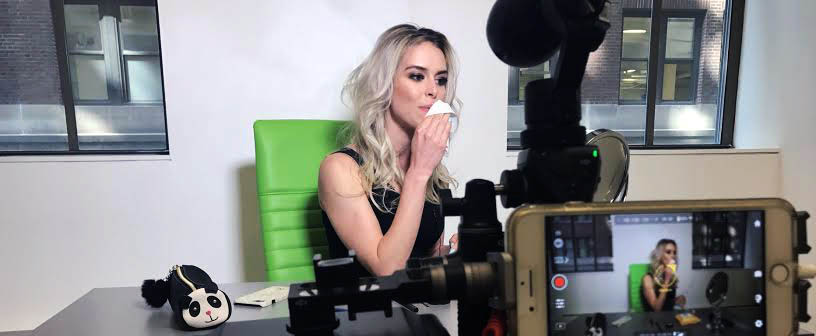
Oct 24, 2017 | Featured, Summer Experiences
By Miro Bergam (V)
Early last summer, I embarked on my first foray into the professional working world. Dressed in my business casual best and armed with a shiny new MetroCard, I hopped on the 7:30 A.M. train for the first day at my internship with a video journalism company down the street from the New York Stock Exchange.
After series of newbie mistakes—buying a ticket to Newark Penn Station instead of New York Penn Station, walking up Wall Street at least five times before finding my building, forgetting a photo ID, etc.—I arrived thirty minutes late to my office feeling even more daunted than before. I expected nothing less than a stuffy, time-crunching work environment run by an exacting boss, who would be annoyed by my tardiness on the first day.
Upon arrival, I was astonished to find that I was earlier than my boss. When he arrived, he apologized for his lateness, saying he was exhausted from a weekend of surfing. Before he showed me what I would be working on for the next month, he insisted on having coffee with me so we could learn more about each other. I’m not sure whether it was the relaxed manner of my boss and coworkers or the massive poster of an almost-naked Howard Stern on the wall near my desk, but I could tell that this job was not going to be the stereotypical, stringent, Wall Street experience I had expected.
That’s not to say my work wasn’t highly rigorous and educational. Over the course of my internship, I learned about the production of video journalism at all of its stages. I operated several different advanced cameras, used advanced editing software, and distributed videos to our third party buyers. Beyond these technical skills, I wrote and reported on reputable news stories. I also learned about finance through my multiple visits to the NASDAQ and New York Stock Exchange.
The casual and colorful environment under which I worked optimized my learning and made for a positive experience to which I would be eager to return. My boss made a point of this to me; he told me that he would rather his employees come to work happy than punch in a card on time, so long as all the work (around 15 videos per day) got done. He always emphasized the importance of loving one’s job, telling me how he had left his job on the Stock Exchange to pursue journalism. He said that although his previous job had been more lucrative, he had chosen to follow what made him happy. His choice to run his business in an easygoing, lively way reflects that same desire for all his employees to come to work with a smile on their face. The functionality of this work model really shone through when one of the reporters had a crisis at home. Thanks to the compassion of my boss and coworkers, the reporter took as much time off as she needed to handle the incident, as the rest of the employees gladly filled in for her. If the workplace were not run so leniently, I doubt anyone would have been as eager to help out, and the reporter would have had to compromise either her work or deal with the issue at home. However, since the company had been understanding in their times of need, the employees readily offered to fill in.
I came away believing that the style in which my boss leads his company should be applied to our lives at Pingry. On a personal level, this translates to how students allocate their time. I know how hard it is for Pingry students to quit anything; it took me several years to quit swimming, an activity I started out of obligation instead of interest. However, as my boss taught me in regard to his old job, doing something you dislike is neither productive nor sustainable, and pursuing what you are passionate about will optimize happiness and mental health.
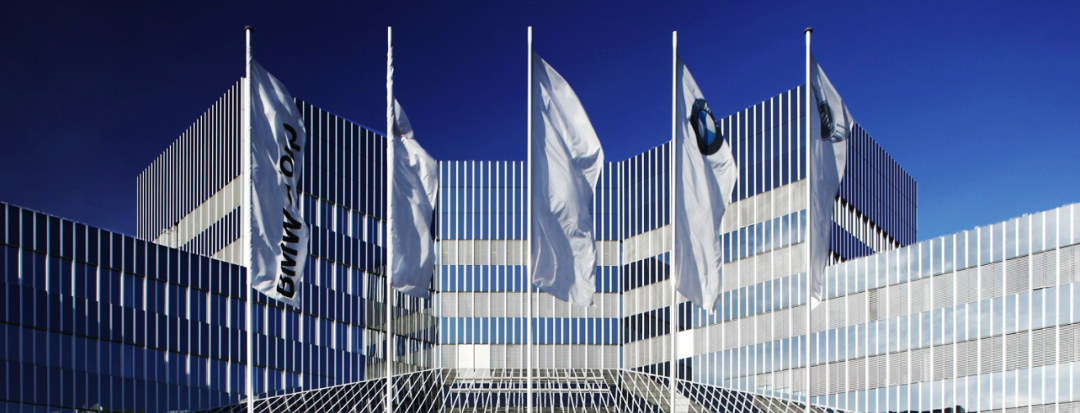
Oct 24, 2017 | Featured, Summer Experiences
By Nicole Kloss (V)
Ever since I was a young child, I have visited my family in Germany every year. I used to love running around the quaint town of Schwabisch Hall, splashing my feet in the Kocher River, and playing mini golf tournaments with my cousins. Over my years of spending time in Germany, my love for the country and its culture has grown, which drove me to apply for a couple of internships in Germany this summer. However, the internship that stood out to me the most was one for BMW.
BMW, the Bayerische Motoren Werke, is a successful car company founded and located in Munich, Germany. The luxury car company is a large part of German culture and I was honored to have the opportunity to contribute to this amazing company. After being accepted to intern in the contracting department at BMW, my uncle and his family helped make the opportunity a reality by offering their home for me to stay in for one month.
Towards the end of June, I packed a suitcase full of business casual clothing, got on a plane with my family, and flew to Germany in anticipation for my internship. When we arrived at the airport, my mom and sister drove two hours west to Schwabisch Hall, and my dad and I drove two hours south to Munich. After arriving in Munich, my dad helped me settle in and I caught up with my extended family. However, it was not until the next morning, when my dad had already left for Schwabisch Hall, that I realized how independent I would have to become.
At home, my parents care a lot about my safety. They don’t want me to use public transportation alone, stay out late, or even walk around New York City by myself. But without my parents around, I had to adapt to my new independence. Along with becoming independent, I was determined to make the most out of my internship at BMW.
On my first day of work, my uncle explained to me how to get to BMW. Following his instructions, I walked from his house to the subway station, bought a subway ticket, boarded the U2 subway, and was finally on my way to BMW.
After the thirty-minute ride, I stepped out of the subway station. Directly in front of me was a large, sleek BMW building. I quickly realized that this building was where I would work, and I was stunned. I walked through the revolving doors and met Selin, a college intern whom I was to shadow. As I followed her towards our department, I was surprised by the amount of people I passed by. I later learned that tens of thousands of people work in that building alone.
When we got to our office, Selin showed me around the contracting department, gave me a desk, and explained what was expected of me. My duties included speaking only German and working from 8am to 4pm every day. Selin then gave me a tour of BMW through BMW’s employee bus service. The area BMW occupies is much larger than I had imagined, as the building I first saw occupies only a small area. I saw several large factory buildings and Selin even brought me to the nineteenth floor of the BMW headquarters. She then led me back to our office and gave me PowerPoint presentations to read about BMW and their history. I also learned a lot about the contracting department. After a long day, I took the subway back home. I was exhausted and went straight to bed.
Although my first day at BMW was overwhelming and required a lot of independence, my excitement to intern at a company I was passionate about continued during the time I was there. As an intern, I completed many tasks including translating contracts, filing contracts into excel sheets, and attending meetings with potential suppliers. I also experienced a factory tour.
My internship at BMW has helped me mature and I am grateful to have had a wonderful opportunity to learn more about German people, experience their culture, and be a part of the working environment at one of the most successful companies in the world.
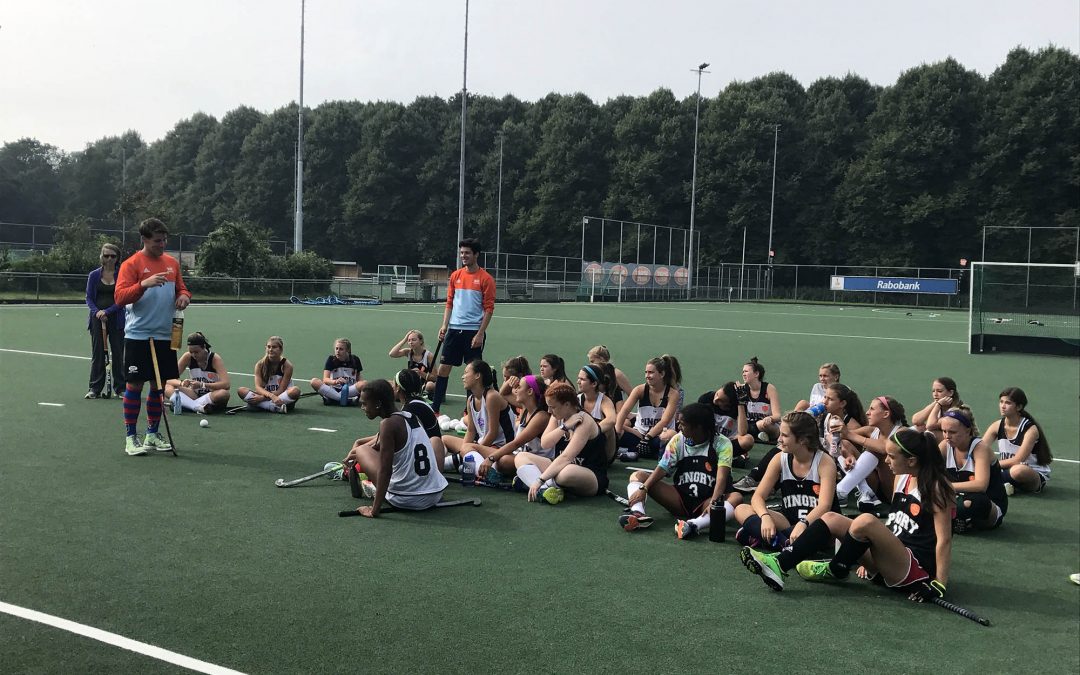
Oct 24, 2017 | Featured, Summer Experiences
By Shruti Sagar (VI)
More than two dozen field hockey sticks and giant harrow backpacks were piled on top of each other as we checked in at the Newark airport. I started to feel overwhelmed by the fact that this trip was actually happening. It was less than a year ago that my field hockey friends and I were joking around with our coaches about taking a team trip to Holland, so the fact that I was starting my senior year traveling to Europe with my best friends was still hard to believe. After weighing our bags, waiting in a long security line, and scrambling for last minute snacks, twenty-eight girls and four coaches boarded our evening flight to Amsterdam.
We arrived in Holland early in the morning and immediately boarded a bus to our home for the next nine days. Our team stayed in villas filled with common areas where we spent our time together every night. After dropping off our bags, we hit the ground running with a full day of sightseeing in the Dutch countryside. We were able to try Dutch pancakes, explore windmills and bakeries, and gain familiarity with the sights and sounds of Holland. We continued sightseeing the next day as we ventured into the capital city of Amsterdam. We spent our day touring Anne Frank’s house, shopping and exploring in smaller groups, and taking pictures in front of the beautiful buildings and elaborate canals.
After two full days of exploring Holland, it was time to finally play some field hockey. We each rented a bike and rode through the forest in the rain to the field hockey club where we would train. Field hockey clubs in the Netherlands are synonymous to country clubs in America; they have endless amenities and allow for athletes to socialize while practicing their skills using state-of-the-art facilities. We met our Dutch coaches, who became our friends and role models during our days of training. Their expertise and humor kept us entertained and working hard. We still reminisce about their jokes daily.
We fell into a routine while training that the team would come to love and miss once we came home. We hopped on our bikes each morning, sore from the previous day and bundled up in sweatshirts because of the windy, rainy weather.
We practiced with our Dutch and Pingry coaches for a few hours each day; then we took a break for lunch, which almost always consisted of sandwiches. The Dutch coaches introduced us to a couple of their favorite sandwich combinations, like peanut butter and chocolate sprinkles. After lunch, we would get back on our bikes to play a few more hours of field hockey. We also played in international matches with and against Dutch and international field hockey players. These athletes were incredibly skilled and agile, and it was amazing to see the differences in technique compared to American teams. One night, we were even able to watch the Dutch national team compete in a friendly match against India. Many of us had never seen field hockey at this caliber, and we were stunned watching their speed and flawless passing.
Throughout our trip, our coaches set phone restrictions for us that allowed us one hour of phone time each day; when we were touring and playing field hockey, our phones were to stay turned off in the villas. When we first heard about these phone restrictions, many of us felt uneasy about staying “unplugged” in a foreign land, but after nine days full of dance parties, solving a thousand-piece puzzle, deep talks, and endless rounds of elephant master and card games, many of my teammates reflected on the no phone policy as a positive experience. Because of our efforts to live in the moment, we were able to immerse ourselves in new perspectives and cultures, creating an unforgettable experience that will remain a part of Pingry field hockey for years to come.
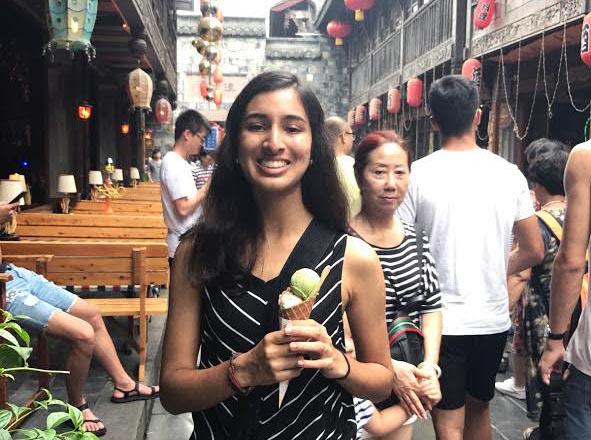
Oct 24, 2017 | Featured, Summer Experiences
By Alisa Chokshi (V)
This past summer, I was fortunate to receive a National Security Language Initiative for Youth (NSLI-Y) scholarship from the US State Department for a language and cultural immersion program in China. NSLI-Y’s goal is to help prepare American citizens to be leaders in a global world by helping students gain critical language skills and cultural knowledge to promote communication between countries. The Chinese language has always fascinated me with its complex characters and tones. As an aspiring polyglot, I thought this would be the perfect opportunity to learn it.
I became part of a group with 27 other teenagers who turned into family over the course of six weeks.
The program offered the unique chance to communicate with Chinese people from all walks of life, such as the ones I met and befriended on domestic flights, my host family, teachers, peer tutors, the elderly, young children, shopkeepers, and waiters.
From climbing the Great Wall to swooning over cute pandas, from having a traditional farm lunch in the countryside to crashing Chinese weddings, I was truly immersed in the local Chinese culture, an experience unlike anything I could have imagined.
My excitement made my host family appreciate their culture even more. Wednesday was my favorite day of the week because we had morning language classes and then spent the rest of the day on a cultural excursion to usually do community service. I volunteered at a kids’ summer camp, helped out at senior citizen centers, and taught young children English.
On one particular Wednesday we went to Huang Long Xi, a famous ancient town that has a river flowing through it. There were hundreds of Chinese people playing around in the water, and my friend and I tried to stay away to avoid getting soaked. Unfortunately, this was not so easy. As my friend was taking a picture of me, a man came up behind us and soaked us with a bucket of water. We were annoyed, but at the same time, we realized we were getting the authentic experience.
Among my favorite times were the weekends when my host family and I would go on long road trips to a different cities, exploring their history and culture. Overall, I went to six different cities over the course of six weeks. In the end, I was in tears at the Chengdu airport. Saying goodbye to my host mother and sister was so difficult.
I have a lot to think about now that I’m back in America.
During the first week in Chengdu, I remember hearing a thought-provoking statement during our visit to the US Consulate. A representative had told us that the relations between two countries are built on people-to-people interactions more so than exchanges between media, government, etc., and I remember thinking that this concept was so simple yet so powerful.
After finishing my program, I can now say with certainty that the people-to-people interactions I had with Chinese people were the most rewarding part of my experience. Whether it was joking around with my Chinese friends, having meaningful discussions with my host family, or simply bargaining with shopkeepers in Chinese, I broke down many stereotypes and gained a true appreciation for China and its deep culture.









